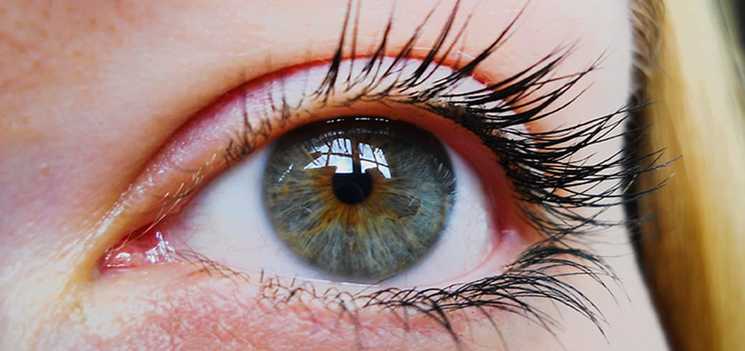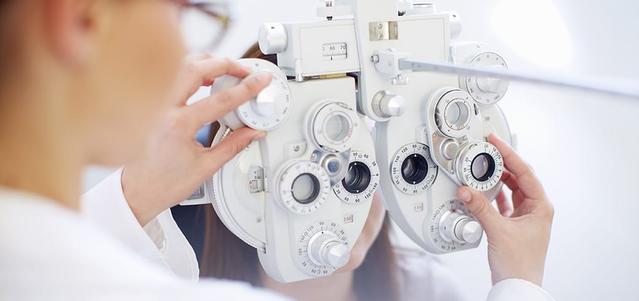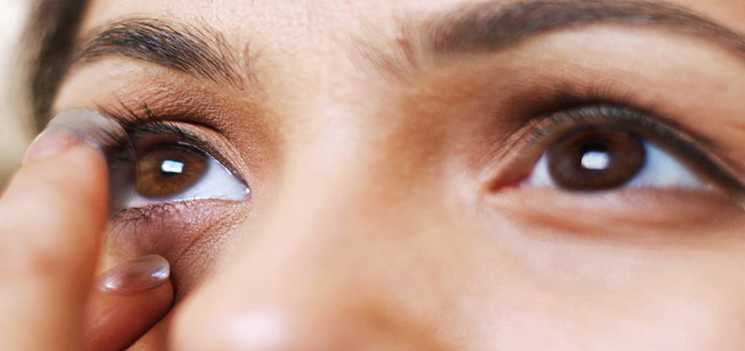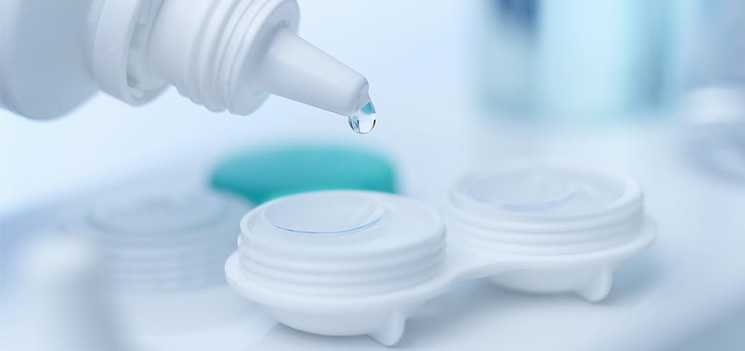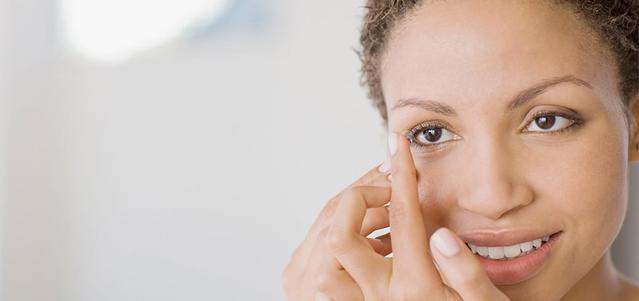Eye health needs to be an essential component to your regular doctor check-ups. In fact, eye tests conducted at a professional are not only beneficial to the health of your eyes, but are also very telling and are could uncover a number of health conditions that you might not be aware of, including high blood pressure, health disease, diabetes, rheumatoid arthritis, thyroid disorder, parkinson’s disease, and cancer, among others.
Use the “Find An Eye Care Professional” tool to find an Eye Care Professional near you and schedule an eye examination.
Different Types of Eye & Vision Tests
There are a number of eye tests that can help diagnose various eye concerns and conditions. Below are 9 of the most common eye tests for optimal vision health :
1. Visual Acuity Test
Visual acuity test measures the clarity of sight and is often conducted via letters printed on a chart or a screen, placed at a distance. The chart is more commonly known as a Snellen Eye Chart, which shows 11 rows of capital letters, the first row being the largest in size with one letter and the rows to follow have an increasing number of letters of subsequently smaller sizes.
The patient would stand 6 meters away from the Snellen Eye Chart and read the letters without glasses or contacts using one eye while covering the other.
2. Visual Field Test
Visual field test determines the extent of side vision through a careful examination of the overall field of vision. This test can include a confrontation exam, examined through the movement of the doctors’ hand, manual testing, conducted through looking at the center of the screen and narrating to the doctor what is visible around it, and automated perimetry through pressing a button every time a light is visible on the screen.
One type of visual field test is Amsler Grid. The Amsler Grid is used for patients who suffer from age-related macular degeneration (AMD). The grid has a pattern of straight lines that compose equal squares. The patient is asked to look at a dot in the middle of the grid and describe any wavy or blurry areas around the dot.
3. Schirmer’s Test
Schirmer’s test helps in identifying whether the eye is producing enough tears. This production process is vital to keep the eye moist and healthy. Conducting a Schrimer’s test is done via placing a filter paper inside the lower eyelid while the patient closes his/her eyes for five minutes. The doctor then removes the paper and evaluates the extent of dryness in the eyes.
4. Eye Muscle Test
The muscle eye test examines eye movement through following a moving object, typically a pen or a small light. The doctor identifies whether the muscles are weak or there is poor coordination or control.
5. Refraction Assessment
A refraction assessment determines whether you have a refractive error, which would require glasses or refractive surgery for clear and comfortable vision. Essentially, light waves bend as they pass through the cornea and the lens to reach the back of your eye. If the rays do not focus on the back of your eyes, then there is a refractive error.
To conduct the assessment, you would need to look through a mask-like device, called a phoropter, to determine which combination of lenses provides you with optimal vision.
6. Color Vision Testing
Color vision testing evaluates whether there are difficulties distinguishing between different colors. This eye test requires you to look at several multi-colored dot-patterns. Challenges in differentiating between the colors and patterns would mean that the patient has a color deficiency.
7. Slit-lamp Examination
A slit lamp is used to magnify and illuminate the front of the eye for the doctor to examine the eyelids, the lashes, the cornea, the iris, the lens, and the fluid chamber between your cornea and iris. Usually, dye eye-drops are used to color the film of tears over the eye in order to reveal damaged cells and detect dryness.
8. Retinal Examination
Retinal examination sometimes requires pupil dilation eye-drops to be used to examine the back of the eye, including the retina, the optic disk, and the retinal blood vessels. Once the eye-drops have taken effect, the doctor might resort to a direct exam through the use of an ophthalmoscope that shines a beam of light into the eye or to an indirect exam through the use of a condensing lens.
9. Screening for Glaucoma
Glaucoma is a disease that causes damage to the optic nerve. The doctor measures the fluid pressure inside the eye, what is known as the intraocular pressure, through applanation tonometry or noncontact tonometry.
Related: Glaucoma – Causes and Symptoms
What to Consider when Choosing your Eye-Care Specialist
- Experience not only includes the number of years but the cases the eye practitioner has been exposed to. It also incorporates the practitioners’ involvement in research and seminars.
- Qualifications include the proper credentials from reputable institutions to diagnose, treat, and prevent disease in addition to internships and resident training, when needed.
- Services offered include professional specializations based on your needs and/or concerns.
- Patient satisfaction includes referrals from family, friends, and/or acquaintances.
It would be helpful to consider the three different types of eye care practitioners. These include the following:
1. An Optometrist:
Optometrists can provide vision care. They conduct a number of eye tests to diagnose and treat changes in vision. Particularly, an optometrist conducts eye tests, prescribes eyeglasses and/or contact lenses, prescribes medication, and provides visual rehabilitation.
2. An Ophthalmologist:
Ophthalmologists are specialized doctors that are experienced in both medicine and surgery. Similar to optometrists, they are able to prescribe and fit eyeglasses but they can also diagnose and treat all eye conditions, perform eye surgeries, and conduct research.
Ophthalmologists may have a subspecialty, including cornea specialist, retina specialist, glaucoma specialist, pediatric specialist, neurology specialist, and plastic surgery specialist.
3. An Optician:
An optician is a technician that designs and fits visual aids, such as contact lenses and eye glasses. Opticians rely on the prescriptions issued by the optometrist and/or the ophthalmologist.
Keep your Eyes Safe and Healthy with the following Eye-Care Tips
In addition to eye tests, you might want to take some precautionary measures to keep your eyes safe and healthy. Here are some habits to incorporate daily:
- Follow a healthy diet
- Maintain a healthy weight
- Exercise regularly
- Wear sunglasses while in direct sunlight
- Avoid smoking
- Give your eyes a rest
- Know your family history and other risk factors
- Take precautionary measures when wearing contacts
As a final note, keep your eye tests up-to-date and regular to ensure optimal vision health. Your optimal eye test depends on various factors, such as your age and medical history, among others.
References:
- https://www.aarp.org/health/conditions-treatments/info-2021/eye-exam-health.html
- https://www.mayoclinic.org/tests-procedures/eye-exam/about/pac-20384655
- https://www.aao.org/eye-health/tips-prevention/eye-chart-facts-history
- https://ww w.aao.org/eye-health/tips-prevention/visual-field-testing
- https://www.ncbi.nlm.nih.gov/pmc/articles/PMC3284761/
- https://my.clevelandclinic.org/health/articles/8607-eye-care-specialists
- https://www.medicalnewstoday.com/articles/327500
- https://medlineplus.gov/eyecare.html


